While looking for a plant to occupy your room, you should put a few considerations in place. And if your room has fluorescent lighting, you should bear in mind not all plants may thrive. This detailed article will explain 12 plants that will add aesthetics to your room and how best to take care for them.

Table of Contents
Can plants grow with fluorescent light?
Plants can thrive with fluorescent light. The performance of a plant will highly depend on the grow light used. The use of garden fluorescent light allows you to grow a variety of plants in an enclosed space. Florescent light hanging closely to the top of the plant can facilitate photosynthesis to take place.
Modern fluorescent light has a high lumen output and can serve you for longer than the older ones, which used to be delicate and had a lower lumen output. This made them unsuitable during the fruiting and flowering stage of the plant.
When installing fluorescent lights, it is essential to use a light meter to measure the area covered by the light to ensure all crops get sufficient light.
What Plants Grow Under Fluorescent Light?
Let’s take a look at the 12 most attractive houseplants that grow under fluorescent light:
1. Zamioculcasi (ZZ Plant)
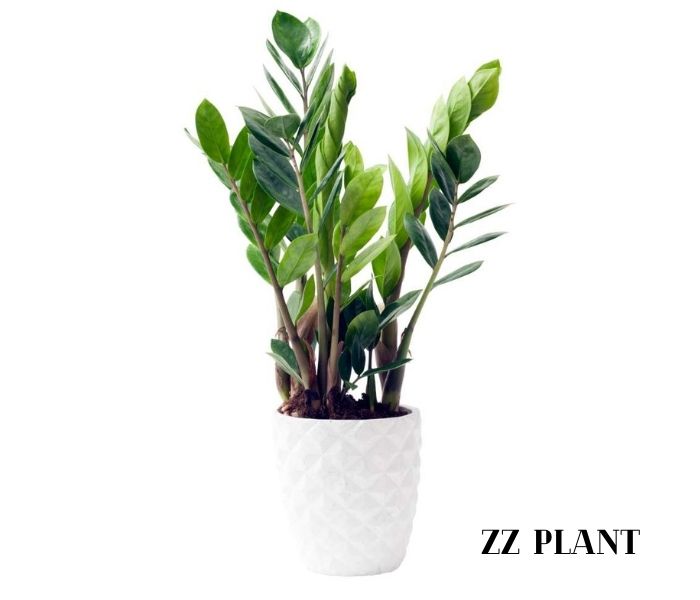
The ZZ plant is an appealing green and tough plant with waxy leaves. The waxy leaves give the plant a nice shine that sparkles your room. Also, the eye-catching foliage makes the plant ideal as an office decoration. The plant survives best in areas with dry air, no natural light, and less fluorescent lighting.
The plant is affected by direct sunlight or intense light like sunlight. In the case of direct light, the plant’s leaves begin to curl inwards. You will also notice abnormal yellowing of leaves, a condition known as Chlorosis.
To be sure where the ZZ plants will adapt best, try various spots. If the leaves begin to turn dark, brown, or dried out, it is a sign your plant is getting excess sun. Move your plant to a shadier spot. Pale and small leaves indicate stunted growth which means the plants are not getting enough light.
The ZZ plant requires less watering making it easy to maintain.
2. Bromeliad (Bromeliaceae)
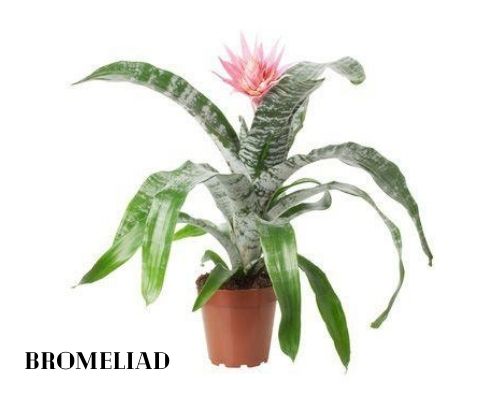
The Bromeliad Plant is mainly suited for tropical regions. Direct sunlight doesn’t auger well with the plant, as is the case with the ZZ plant.
Exposing the plant to direct sunlight will kill it. It is, therefore, best to keep it near the window while ensuring it doesn’t come into direct conduct with the sun. You can also keep it at the top of shelves, tabletops, or on the floor, depending on the species. Moreover, the plant will flourish under low-power fluorescent light.
3. Snake Plant
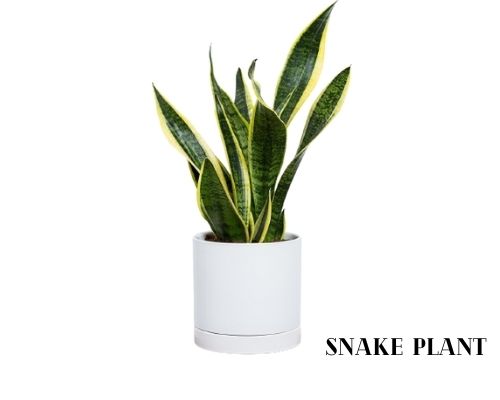
This plant is also called mother in-law’s plant. The leaves are sharp-pointed hence the nickname. The plant’s name comes from its colored stripes on the leaves of the plant, which resemble the skin of a snake.
The snake plant can overgrow, so it is essential to plant it in a pot not to flood the whole place. Additionally, it is a hardy plant that can still maintain its freshness even after being abandoned for a while.
The plant can survive different light conditions though it prefers indirect light. It would be best to let the soil dry in between watering to prevent the plant from rotting.
4. Chlorophytum Comosum (Spider Plants)
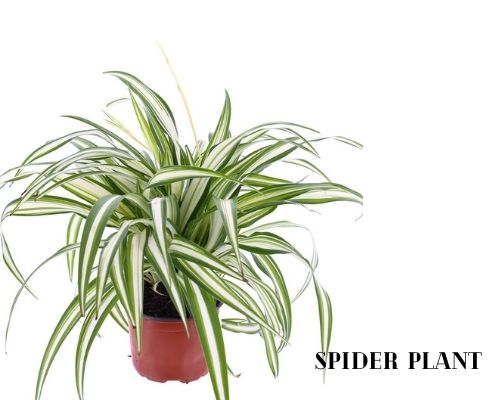
The foliage of the spider plant is tall and skinny, which branches out from the roots. The leaves of this plant resemble the leg of a spider. When well cared for, the plant can produce small white flowers that sprout into spiderettes that can be replanted.
Spider plant doesn’t need much light. They can also do well in both natural and fluorescent light. When the plant is exposed to water with fluoride, the leaves turn brownish. You can solve that by watering it with distilled or rainwater.
5. Peace Lily (Spathiphyllum)

The peace lily is not the same as the true lily. The white petal is a leaf bract covering the yellow flower.
The peace lily leaves can grow up to 40 inches long. That is why it is among the famous floor decoration plants. It is a peculiar plant that does well in low to medium light. Light dramatically affects the flowering stage. Low light reduces the chances of flowering, while medium-light makes the plant bloom. Thus, the more the light, the more the flowers. Giving the plant minimum fluorescent light will do the plant great.
The peace lily can also be used as an air purification plant.
6. Dieffenbachia (Dumb Cane)

The plant’s name is from its 100% poisonous nature. When consumed, it can cause swelling or itching when one comes into contact with it. Thus it would help if you keep it out of reach for pets and children.
Depending on the species, the plant thrives in low to high filtered light. Filtered light means that the light passes through another object like a window before reaching the plant. Most species can survive low filtered light but discontinue to grow depending on the species. It is therefore vital to review your preferred choice and know what light it is best fitted for.
The fluorescent light used should be filtered for it to thrive well.
7. Parlor Palm (Chamaedorea elegans)
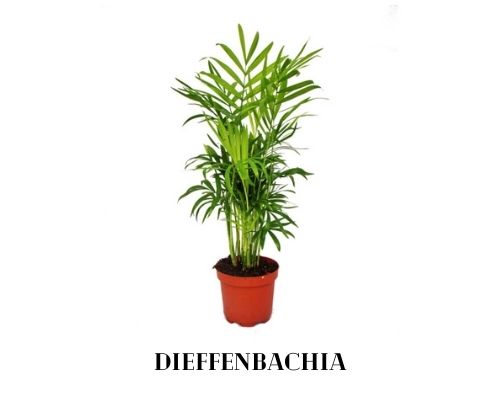
This plant is suitable in a living room or dining room. In the 19th century, owning this plant was a sign that one is powerful and wealthy, especially in Britain. Parlor palm performs well in medium light though they can survive in low light. They prefer darker areas to bright areas.
The parlor palm thrives in medium and low light too. It is among office plants that appreciate fluorescent lighting. The plant bears an appealing elegance which makes it noticeable wherever it is placed.
8. Pothos (Epipremnum aureum)
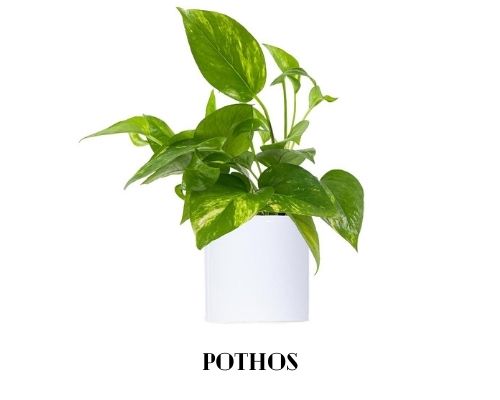
For beginners, pothos may be your ideal choice. The pothos plants grow long vines that can decorate your accenting walls. Also, it brings a tropical feeling to your room. Thus, they are the best fit for hanging plants or potted on a desk. Medium indoor light is the best light factor for pothos. Fluorescent bulbs with medium-light can provide that.
However, the plant won’t disappoint in low light. Excessive direct light will cause yellowing of leaves. Pale leaves will indicate insufficient light.
9. Philodendron
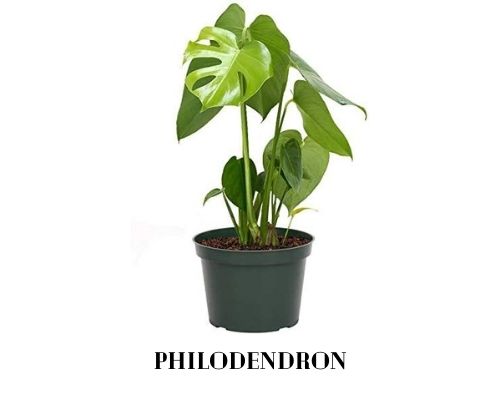
Philodendrons are famous for their lively foliage and distinct appearance. The heartleaf philodendron is hardy and is resistant to several harsh conditions. This species does well with minimal care that includes low light. The plant varieties are either climbing or non-climbing. It can grow 3 feet tall and widen up to six feet when well taken care of.
Despite them surviving in partially shaded areas, philodendron requires bright indirect light. Long skinny stems indicate insufficient light with long gaps in between the leaves.
The plant can grow on a hanger, trellis, or along a shelf in your office. Moreover, Philodendron acts as a cleaner by getting rid of formaldehyde as it does industrial detergents and soaps.
10. Cast-iron Plant
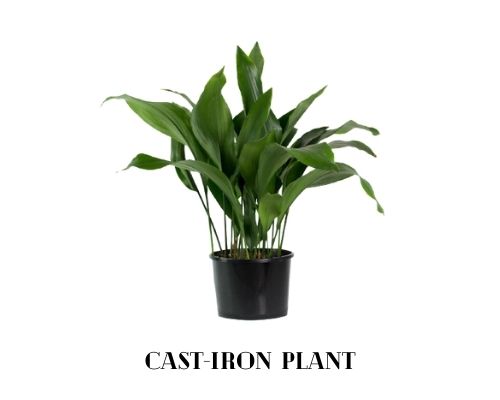
Its hardy nature makes it popular as the “iron plant.” It is a common choice for black thumps and busy plant owners due to its resistance to various harsh conditions. They are low-light plants that can survive in any corner of your room. They are slow to grow but hard to kill. Keep the plant away from direct light to avoid brown or scorched leaves.
Wiping the plant’s leaves once a week increases light and nutrient absorption rate, thus more sparkling. You can place it where a small amount of fluorescent light will reach. The fluorescent light is sufficient to grow the plant. The roots are deep.
11. Chinese Evergreen (Aglaonema)
In some communities, the plant is considered a lucky bringer. Chinese evergreen plants are easy to grow, making them an excellent choice for beginners. Older Chinese evergreens have flowers similar to those of calla lilies.
They look best when placed on the floor beside your furniture. Young species are sufficiently compact to put on the desk, shelf, and tabletop. The Chinese evergreen is among NASA’s list of air-filtering plants. It is, therefore, a healthy plant too.
The plant’s sun needs differ depending on the leaves’ color. Darker leaves require low light. Light-colored leaves like pink or orange will do great with medium light. Avoid placing the plant in direct light to prevent scorched leaves.
12. Peperomia
Its thick leaves make it survive with less water. Thus, it can survive in dry soil. The leaves are either red, grey, cream, or green.
Just like other fluorescent plants, peperomia dreads direct sunlight. The plant prefers bright, indirect light or fluorescent lighting. Partially shaded areas are also an excellent place to grow the plant.
They are small plants that can make a fantastic green lush on your table or desk.
Advantages of growing plants under fluorescent lighting
- They emit low heat making them safe to place near plants.
- When used under lighting, they can accelerate plant growth when used outdoor or in a green house.
- They produce the right light intensity which promotes growth of healthy stems and foliage.
- They provide a full daylight spectrum like the sun, which makes them suitable for most houseplants.
- They have a low initial cost as compared to any other source of light.
- Can be placed in different positions to ensure all parts of the plant get adequate light.
- They can be used to supplement other sources of light to reduce energy consumption.
Tips on Growing Plants Under Office Light
With time the light a fluorescent light emits declines, and sometimes it’s not easy to notice a visible decrease. The best thing to do is to replace your lights after 12 to 18 months.
Once the plant reach a height of 8 inches the lower leaves get hidden from light thus they receive low energy, you can build unheated bottomless box with a transparent adjustable lid to help the plant adjust to the intensity of the light.
Will any LED light work as a grow light?
Any LED lights can be used as a grow light. However, regular LED lights emit less color or light spectrum required by plants to photosynthesize. Thus, it is vital to ensure that the LED light you are using has enough light spectrum to facilitate photosynthesis.
White LED grow lights offer full spectrum and are made to mimic natural light. They also provide a spectrum of red, blue, and green. These spectra have a significant effect on root formation. Additionally, plants will generally grow under red or blue light. Let’s have look at our latest article on what color light is best for plant growth.
CONCLUSION
You don’t need sunlight to sparkle your room plants. Go ahead and buy your preferred office plant. Your fluorescent lighting will help these 12 plants add a glow to your room. Fluorescent lighting can help during the winter season since the plants will need light to produce food.
